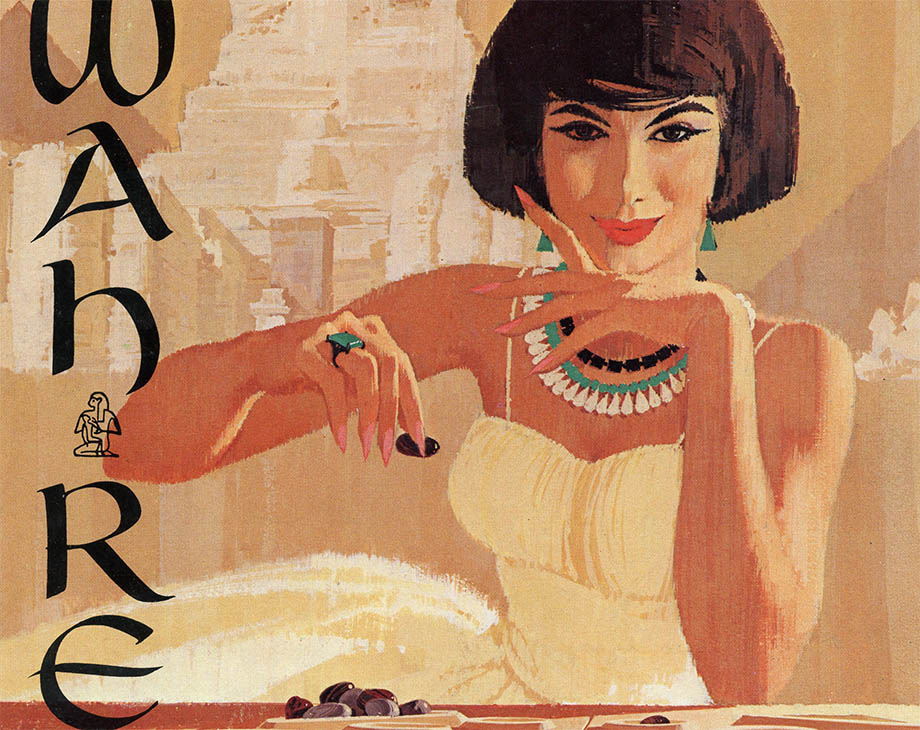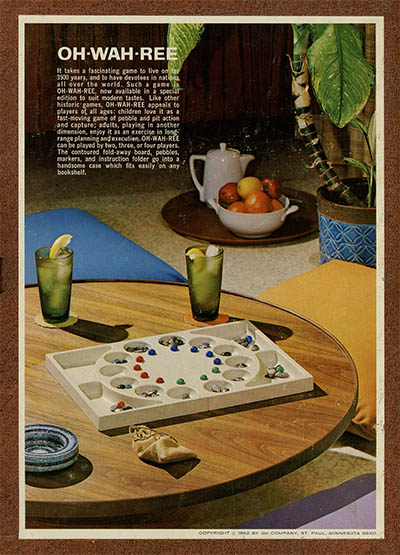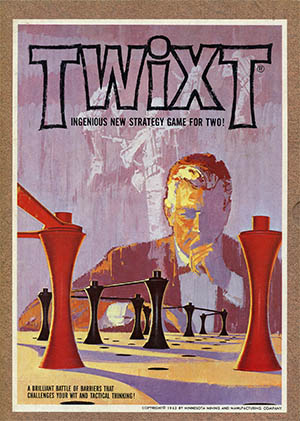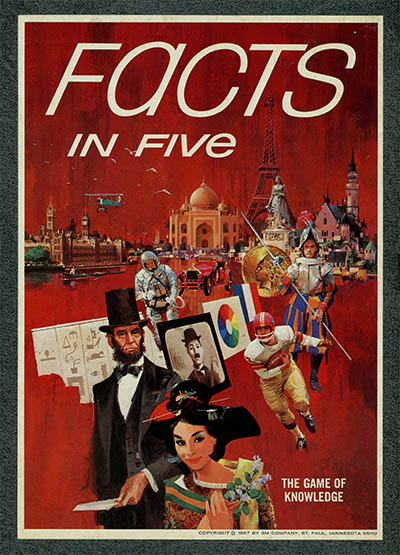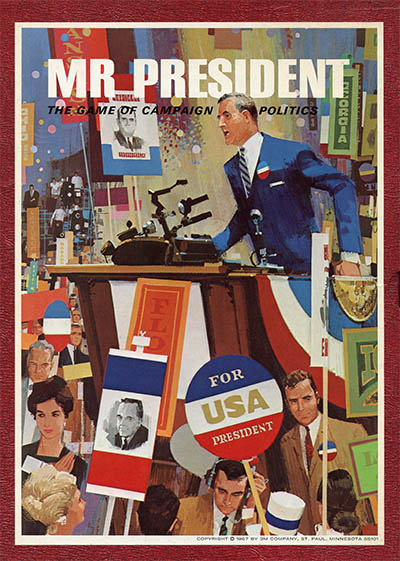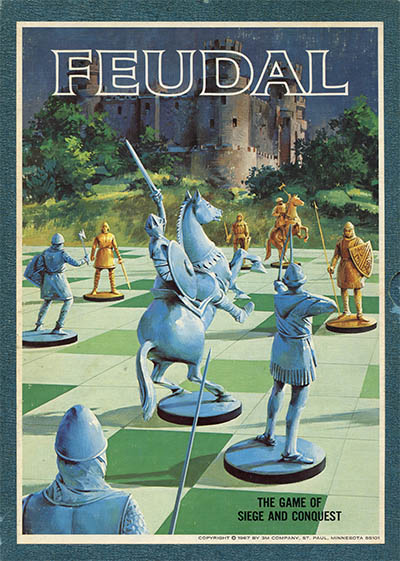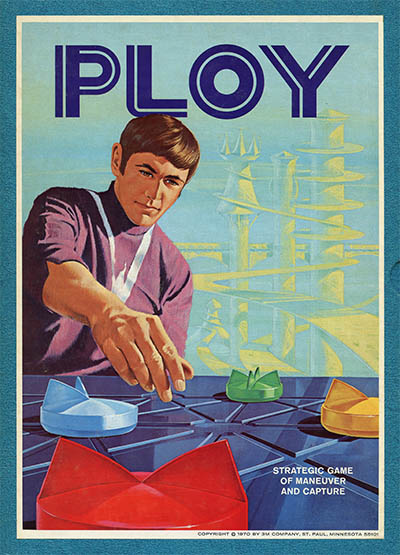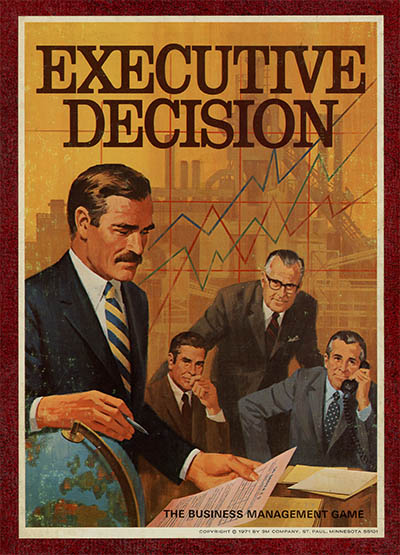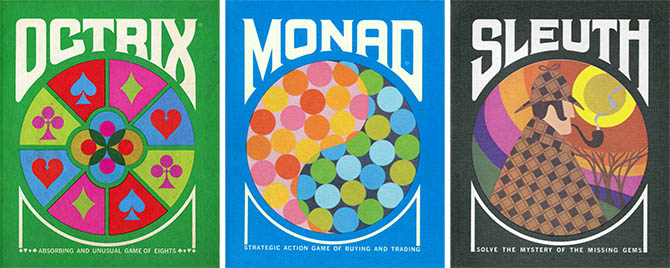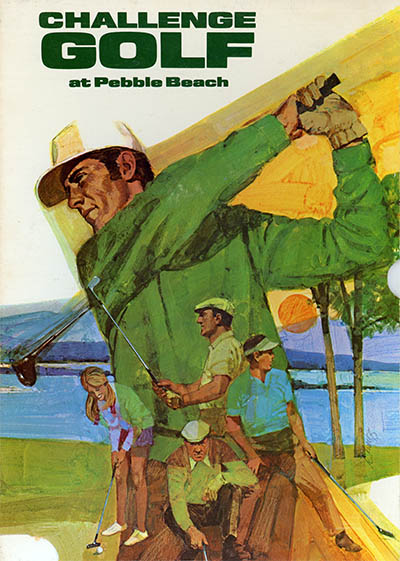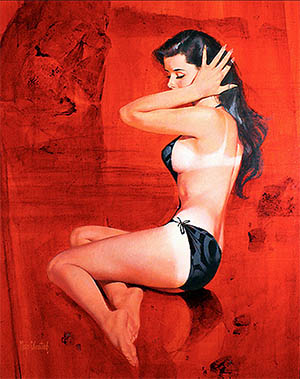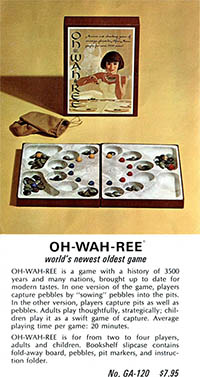Oh-Wah-Ree
The 3M Bookshelf Games
The woman shown above, in her cocktail dress, costume jewelry and ca.VIII Dynasty eyeliner is ostensibly playing Oh-Wah-Ree but her body language really suggests something else altogether. She may very well be the most alluring woman ever depicted on the cover of a board game. This is not completely surprising: the gouache and tempera painting has been attributed to the commercial pin-up artist Mayo Olmstead, who, if nothing else, knew how to do alluring.1
Alex Randolph, Oh-Wah-Ree, 1962
By end of the 1950s the Minnesota Mining and Manufacturing Company’s once thriving Retail Tape and Gift Wrap division (the marketer of Scotch™ tape at the time) began losing revenue so they started looking for new product ideas. In a decision that still makes little sense 50 years later, a team of employees looked into “leisure time” activities and as sales manager Bill Carson said “[we] found that the growth of the strategic boxed game market was increasing at a rate of about eight percent compounded annually, so we decided to take a flyer in this field.”
In 1962 the newly-created 3M Games Division released their first three titles, Oh-Wah-Ree, Phlounder and Twixt. After some initial packaging trials in test markets, they settled on the now-familiar 8½ × 12 × 2¼" bookshelf format.2 By 1964 the games were in national distribution.
Alex Randolph, Twixt, 1962
Sid Sackson, Acquire, 1962
L. + P. Winters, High Bid, 1963
By the mid-1960s 3M was receiving some 400 unsolicited game submissions a year but typically released only two or three new titles, and nearly all of these were from established game designers such as Alex Randolph, Fredrick Herschler and the legendary Sid Sackson. Although individual titles were hit-or-miss, the best of them, such as Acquire or Twixt are now in the Games Magazine Hall of Fame.
.Uncredited, Jumpin, 1964
Richard Onanien, Facts in Five, 1964
Uncredited, Quinto, 1964
Uncredited, Mr President, 1965/1967
The Games Division marketed their expensive, high-quality games specifically to adults.3 3M commissioned artwork from freelance commercial artists that, rather than the cartoon style of Milton Bradley, more closely resembled 1960s commercial advertising. The back of the boxes, which were typically blank on most games of the time, featured the titles set up in elaborately-staged, contemporary House Beautiful-level interiors. The result was a rather elegant and sophisticated house style that has really not been seen since.
Alex Randolph, Breakthru, 1965. The crooked pastedown adds to the charm, don’t you think?
Fred Buestchler, Feudal, 1967
Frank Thibault, Ploy, 1970
Sid Sackson, Executive Decision, 1971
By the end of the 1960s the market for expensive, adult-oriented strategy games was declining. 3M responded by producing a series of less costly card-based “gamettes,” small puzzles and finally pencil-and-paper-based games. By the early 1970s they even drastically scaled back their extravagant packaging. Unfortunately none of this proved enough and in 1976 they sold their Game Division to Avalon Hill.
Gamettes (l→r). Uncredited, Octrix, 1970, Sid Sckson, Monad, 1969 and Sleuth 1971
Fredrick Herschler, Challenge Golf at Pebble Beach, 1972
By the time 3M divested their Game Division they had produced 28 Bookcase games, eight flat-box sports games and nine gamettes.4 Although firmly a product of their time, the series later became extraordinarily influential and was responsable for the entire category of strategy games which is still seen in today’s Eurogames.
1. Here, for example, is a typical Olmstead pin-up from the 1960s:
2. The early box variants, either in size (tall box, fat box) or illustration (gray scale, cartoon) are now highly collectable. An original wood-tile “world-map” Acquire, e.g., is now worth some 200 USD. Unreleased playtest versions of games, such as the mythical Jati are worth even more.
True story: When I was a kid, the day after I got my braces (referred to by the orthodontist as appliances), I bought a wood-tile version of Acquire at a local garage sale for 25 cents. Years later, while in college, my Mom summarily disposed of it. This chain of events made me sad until I discovered Ebay.
3. The 1964 catalog lists the bookshelf games at 7.95 USD; almost 54.00 USD today, adjusted for inflation.
4. For a complete review see Guenther Rosenbaum’s 3M Collectors Homepage.
22 Dec 2010, updated 24 Jul 2013 ‧ Design
